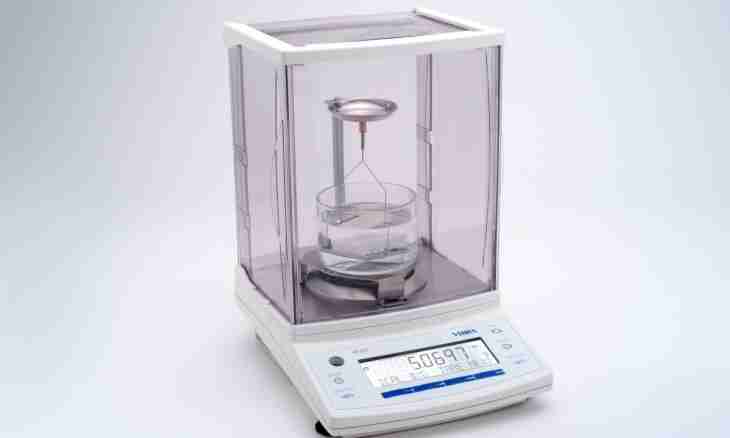Density - the physical quantity thanks to which the objects having identical weight can have various volume. The standard units accepted in the SI system are applied to measurement of density.
Density
Density represents the physical parameter of substance which is in close interrelation with its weight and volume. The ratio between these parameters ordinary is defined by formula p = m/V where p is the density of substance, m - its weight, and V - volume. Thus, the substances having identical volume, but at the same time various weight, in all visibility, differ among themselves on density. The same can be told if with an identical weight any substances have different volume.
Among all other substances on the planet Earth gases have the lowest density. Liquids, as a rule, are characterized by higher in comparison with them density, and the maximum value of this indicator can be met at solid substances. So, for example, the most dense metal it is considered to be osmium.
Measurement of density
For measurement of density in physics and also other subject domains where this concept is used, the special complex unit of measure based on interrelation of density with weight and volume of substance is accepted. So, in the International System of Units of measurement of SI unit used for the description of density of substance is the kilogram on one cubic meter which can be designated for short as kg/m³. At the same time, in case it is about very small volumes of substance concerning which it is necessary to measure density, in physics use derivative of this standard unit expressed as the number of grams on cubic centimeter is applied. In a short form this unit can be designated by g/cm³. At the same time density of various substances tends to change depending on temperature: in most cases its decrease involves increase in density of substance. So, for example, ordinary air at a temperature +20os has density equal of 1.20 kg/m³ whereas at fall of temperature up to 0 wasps its density increases to 1.29 kg/m³, and at its further decrease to - 50 wasps density of air will reach 1.58 kg/m³. At the same time, some substances represent an exception of this rule as change of their density does not submit to the specified regularity: water belongs to them, for example. Various physical devices are used to measurement of density of substances. So, for example, it is possible to measure liquid density by means of the areometer and to determine density of solid or gaseous substance, it is possible to use the densimeter.

